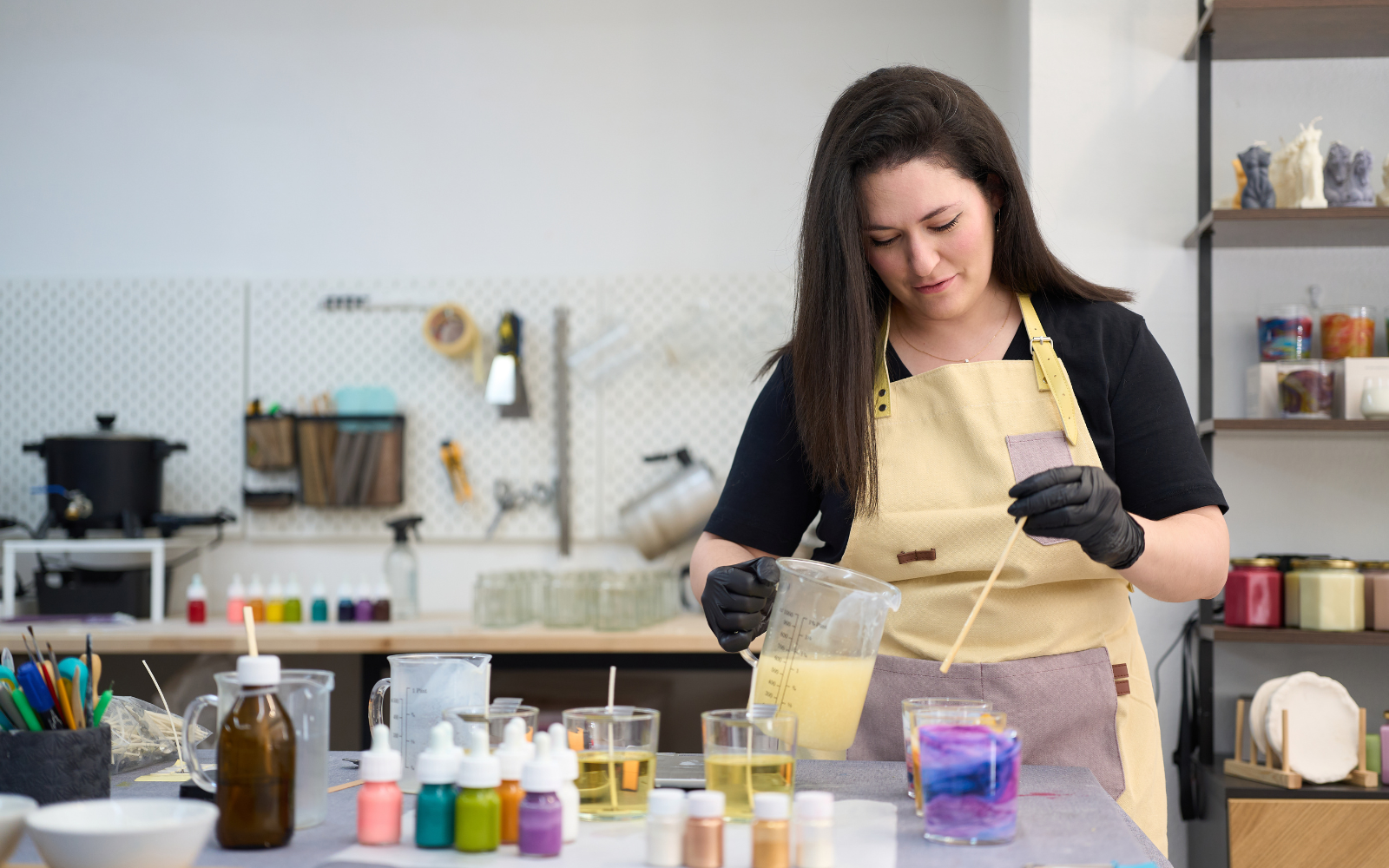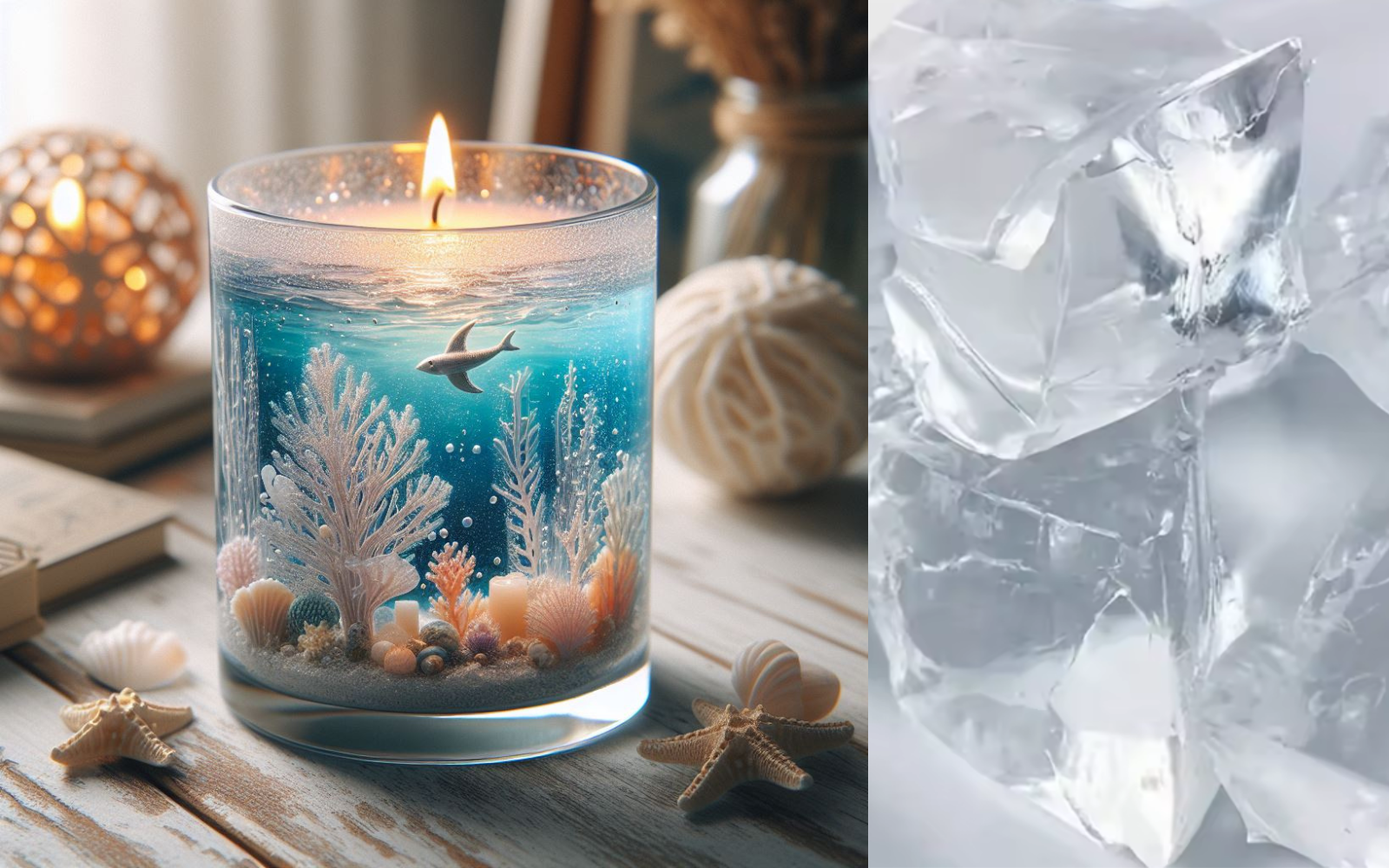THE PRICES SHOWN IN THE WEBSITE DOES NOT INCLUDE TAXES . TAXES ,WHEN APPLIED ARE SHOWN IN THE BASKET

THE PRICES SHOWN IN THE WEBSITE DOES NOT INCLUDE TAXES . TAXES ,WHEN APPLIED ARE SHOWN IN THE BASKET
-
FÜR DIE ENTDECKER ▾- MESSAGE IN A CANDLE
- LET'S LIGHT TOGETHER
- LOVERS COLLECTION
-
LET'S MELT TOGETHER - 1993 THE COLLECTIONS
- LUXURY CANDLES
- Die Luxus-Reed-Diffusoren von 1993
- Das 1993 luxuriöse Wachsmelt-Wachse
- Glasschmelzbrenner
Kristallbesessenheit - TINY COLLECTIONS
- LIMITED EDITIONS
- SMOKE GREY SET BURNER AND WAXMELTS
- HOME COLLECTIONS
- HOME COLLECTION Nº1
- HOME COLLECTION Nº2
- HOME COLLECTION Nº 3
-
DIY liefert
▾
- Für Kerzen
- CONTAINERWACHSE
-
ALLE WACHSE - WAX ADDITIVES
- Kerzenbehälter.
- Andere Container.
-
DOCHTE -
Kristallbesessenheit -
WACHSE, FARBSTOFFE, BEKRO-FARBEN - Kerzenverpackung.
- Zubehör Kerzenherstellung.
- Sicherheitsaufkleber & Staubabdeckungen
- Kerzen-Kits.
-
TECHNISCHE E-BÜCHER - Für Reed Diffusors & Room Nebel
-
BASE FOR ROOM SPRAYS -
BASIS AUGEO & PARFUMERS ALKOHOL - Diffusorflaschen
-
REEDS -
GLASFLASCHEN FÜR SPRAY & PARFÜM - Flaschen für Seifen und Raumnebel
- Kappen und Pumpen
- Diffusorverpackung.
- Sicherheitsaufkleber
- Für Wachs schmilzt es
-
WZCHS FUR MELTS - Keramikschmelzbrenner
-
WACHSE, FARBSTOFFE, BEKRO-FARBEN -
FÜR TEELICHTE -
Pflanzenstoffe für Wachsschmelzen - Wachsschmelzverpackung.
- Wachsschmelzkits.
- Sicherheitsaufkleber
-
ZUBEHÖR FÜR WACHSSCHMELZEN - MAD MICAS
FÜR DUFTBEUTEL -
MINERALISCHE, VORDUFTENDE BASIS -
PFLANZLICHE STOFFE
- Duftstoffe ▾
- Wagen Wagen
The Olfactory Pyramid
Februar 10, 2022

DECODE THE COMPOSITION OF YOUR FRAGRANCE
Perfume creation always begins with selecting and combining the right mix of raw ingredients. Master perfumers “le nez” must rely on their keen understanding of fragrance notes and their chemistry (i.e. their unique molecular properties) to develop olfactory compositions that are balanced and delight the senses. To achieve the right balance, they depend on a concept called the olfactory pyramid. Here’s how it works.
WHAT IS THE OLFACTORY PYRAMID?

To achieve an agreeable balance, fragrance notes are classified as top notes, heart notes and base notes. These notes make up a perfume’s accord, its character.
Each note reflects a scent’s volatility, or how quickly it evaporates. Those at the top evaporate fastest while those at the base linger longer.
Master perfumers use the olfactory pyramid to represent a perfume’s fragrance notes, each ingredient categorized according to its evaporation rate and persistence over time.
TOP NOTES

The most vivid and energetic, these are a perfume’s most volatile scents. They are what you smell first, establishing a fragrance’s first impression. But, as they are fleeting due to their lighter, smaller molecules, they evaporate quickly. Top notes should be carefully selected, allowing for a pleasant, smooth transition into the next part of the olfactory pyramid.
Popular top notes: lemon, orange, bergamot, pink pepper, blackcurrant, ginger, mint
HEART NOTES

These are the fragrance notes you perceive once the top notes have disappeared. They ensure the continuity of the top notes and prepare for a smooth transition into the base notes. Considered the “soul”, or personality, of a perfume, heart notes make up the majority of a fragrance’s scent. As such, they are evident throughout the full life of the fragrance.
Popular top notes: jasmine, ylang-ylang, violet, rose

Along with the heart notes, base notes tend to add depth and resonance which help build the foundation of a perfume. These notes appear more gradually but also evaporate more gradually.
Popular top notes: vanilla, amber, musk, patchouli, sandalwood, cedarwood
____________
Now that you understand how fragrance structures work, we can talk about olfactory families. Although the classification of smells is very specific (each one has their perception of whether a perfume is sweet or not), a categorization was created for the aromas, called olfactory families, where the essences of each family have similar characteristics, such as present notes.
Some examples of olfactory families are:
FLORAL
It is the largest family that exists and one of the oldest and as the name suggests, it is extracted from flowers such as roses, jasmine, lilies, violets and magnolias. They have more feminine, elegant, delicate and romantic notes.
Examples of subcategories are: Floral Rose (based on rose and is one of the oldest compositions, it tries to bring to the consumer the softness and smoothness of an essence created with just one flower, this one considered soft and queen of flowers) and Floral White (fits- see here jasmine, tuberose, ylang-ylang and orange blossom, which are considered flowers with heavier shades where their notes refer to aggressiveness and sensuality and with a light animal touch).
CYPRUS
Composed of citrus notes of bergamot with oak moss, patchouli and other fine woods. This family had its origins in a perfume (Chypre) that bears this name in honor of a Greek island.
ORIENTAL
It's a mixture of warm notes like vanilla, amber with notes of precious woods . The notes are sensual, mysterious, immersive and warm.
FLORIENTAL
It has a sweet touch. It is a mixture of floral notes with an oriental background, with its sensual, captivating and mysterious notes.
AROMATICS
This class is composed of sage, rosemary, lavender and thyme. It has more energizing, dynamic and natural notes, being usually associated with the male gender.

WOODY
Its essences come from woods such as sandalwood, cedar and patchouli, which correspond to rich and powerful scents, also normally associated with masculine fragrances.

CITRIC
It has refreshing and light notes, pleasing both men and women. It comes from more acidic items such as lemon and bergamot, and its essences are extracted from roses, violets, magnolias and violets.

When we understand a little more about the aromatic structure and the types of olfactory families, it is easier to get it right when choosing a scent for home. Sometimes we have no idea which scent we want, but if we know which scent we like the most (a sweeter, citrusy or woody scent, for example) we can look for some fragrance that belongs to this family, which can help a lot.
There is no rule for choosing a flavoring, you just need to choose a scent that pleases you and brings you good sensations, so you can make your home even more comfortable and welcoming.
Taking into account the fact that smells can influence our mood and concentration, let's leave some scent tips for each place in the house:
LIVING ROOM
The living room is generally the place with the greatest concentration of people, many experts say that there is no rule for this division, as it must express the personality of the owner of the house.
But, some options of aromas that bring a feeling of well-being can go down very well, as it is a place to receive visitors and enjoy with the family (for example, peonies, flowers, pomegranate, lemon)

BATHROOM
Aromas reminiscent of cleanliness, generally fresher such as citrus and herbs, aromas such as pine, mint, eucalyptus, lavender and rosemary can combine very well.
When receiving visitors, a flavoring helps a lot, but scented candles and even sachets make the environment very pleasant.

BEDROOM
Lighter and more relaxing aromas, as it is the room where we rest. Aromas that can bring tranquility such as lavender, sandalwood, ylang -yang and cedar.
In this division, it is worth investing in waters fragrant with these essences, spray the bed, curtains, rugs and even clothes.

CUISINE
More citrus aromas help to remove the smell of grease and food. As it is a place where it has a huge mixture of smells, sweet and strong aromas do not work well. Aromas with rosemary, basil, mint and orange are great. Scented candles and scented water are a good choice, and you can also use fragrances when cleaning, such as mopping the floor.

For this environment it is recommended to use aromas that are more instantaneous and less durable. As aromas can disturb our taste buds, in the kitchen we do not recommend using diffusers or long-lasting flavorings. Use something to smell good at the time, but wear it over time so it doesn't interfere with cooking.
OFFICE
It is a place where we need concentration, stimulation of creativity, memory and organizing thoughts.
Aromas like lemon, rosemary, bamboo, lavender and mint, in this environment the diffuser is the best option, but it can reinforce the smell during the day or at times that need more concentration with a home spray. (examples of essences: rosemary magnum, Tuscan lavender and Sicilian lemon and peony).

Another challenge in our daily lives that most of us face is leaving the house fragrant and getting rid of those bad odors that we eventually have at home. In this quest to find alternatives to keep the house always fragrant, we put together a text giving some suggestions on how you can keep your house always fragrant.
We always like to say that when it comes to home, there are no rules that we must follow to the letter. You should do what makes you feel good and makes you feel cozy.
When choosing the aroma for your home, you need to be very clear about what the people who live in the house like.
Choose some aromas that everyone likes and distributes throughout the environments.
The most important thing will always be the well-being of the people who live in these environments.
Leaving your home warm and welcoming will always be the biggest and most valuable advantage of having a fragrant and smelling house.
Now that you have a broader notion of the power of a fragrance, how its structure works and how we can group them into families, we invite you to discover our fragrances, here.
Source: Adapted from Casa Café Mel blog https://www.casacafemel.com.br/blog/
Hinterlasse einen Kommentar
Kommentare werden genehmigt, bevor sie angezeigt werden.
Auch in Our Blog

Porque Não Deve Aquecer os Óleos de Fragrância (Why You Shouldn’t Heat Fragrance Oils)( PT/EN Versions)
September 18, 2025
Nachrichten Update
Melden Sie sich an, um das Neueste zu Verkäufen, Neuerscheinungen und mehr zu erfahren…
© 2026 Eco Candle Project .



